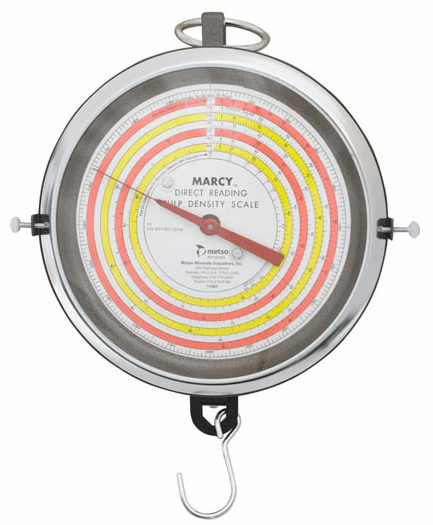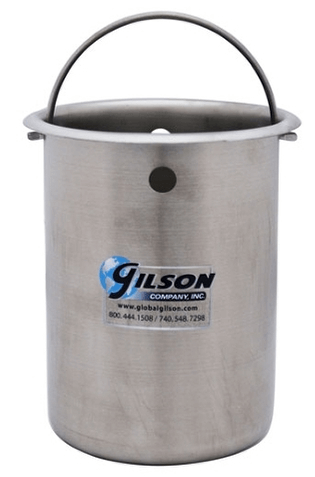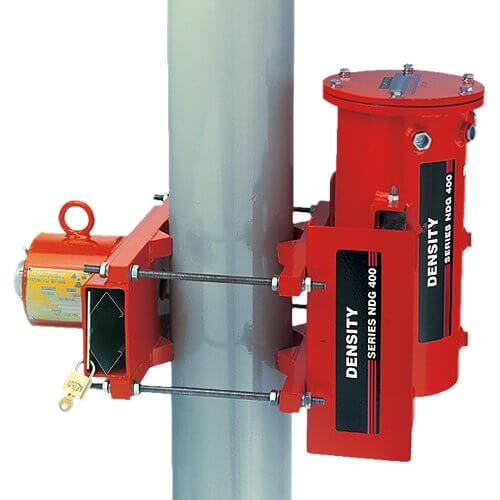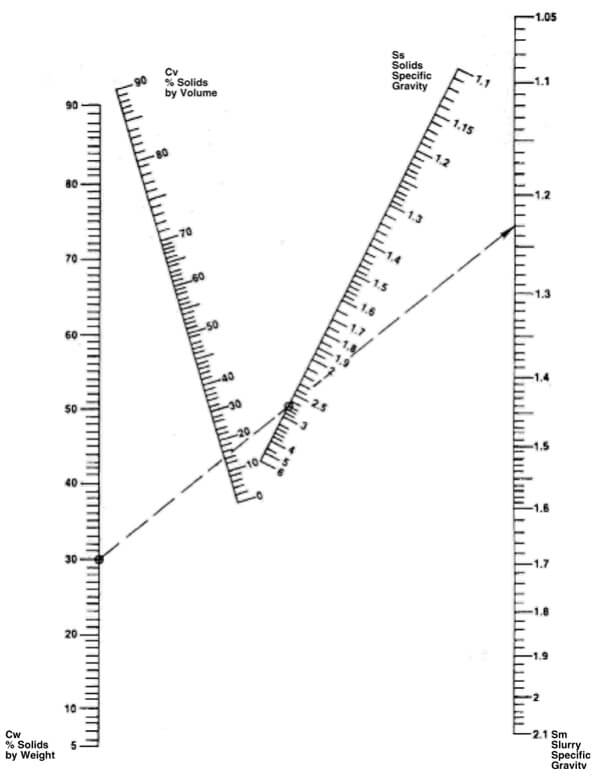
As mill operators you don’t have to worry about the mathematics of a Specific Gravity to Density conversion. These specific gravities have all been worked out and are presented in a table form.

You simply consult the line that represents the specific gravity of the ore that you are working with, match it with the dissecting line that indicates the weight of the sample and read the density of the slurry. Remember, this reading is given in parts of ore in the water not the other way around. Some scales make this even easier by putting the SPECIFIC GRAVITY TABLE on the face of the scale. The indicator needle of the scale will bisect the specific gravity line that is representative of the ore. You simply read the density at this point.
The simple knowledge that one litre of water weighs 1000 grams is very useful to the operator. By simply weighing one litre of water you can verify the accuracy of the scales that you are using.
There are other types of devices used to determine density other than the scales that I have just mentioned. I am sure, that as our knowledge is increased, and other methods will be developed as well.

Before I leave this topic there is one device that I would like to mention, not as an operating interest but as a safety factor. There is a gauge that determines density by counting each particle of slurry as it flows past it and then compares the particles mass to the water that it is in. It is called a GAMMA Density GAUGE and it utilizes a radioactive isotope to make its measurements. Although the gauge is surrounded by a lead shielding and most mills are very careful about where these are situated, there is always the outside chance that this shielding could become damaged and leak radiation. If this gauge is ever involved in a mishap of any type, even if the damage to it is small or non-existent, please report it to your supervisors.
A direct tool for Specific Gravity to Density conversion is the Marcy Pulp Density Scale as it correlates the specific gravity of the ore with the percent solids of the pulp. This information is displayed on a circular scale for several specific gravities by use of a simple weigh scale. The simplicity of the scale along with its many applications have made the Marcy Pulp Density Scale a common feature at concentrators throughout the world. The scale can be used for fast, accurate percent solids determinations at various points throughout a concentrator, enabling adjustments to be made to keep, for example, a grinding circuit running effectively.
Marcy Direct Reading Pulp Density and Specific Gravity Scale speeds up the determination of pulp densities; specific gravities of pulps or liquids; specific gravity of dry solids. It eliminates errors in reading charts or graphs and prevents errors in calculations. Provides greater accuracy and has a wide specific gravity range.
Use the Marcy Scales to obtain the following direct readings: Weight of sample in grams or kilograms. Specific gravity of liquid or pulp. Percent solids contained in the pulp of any given specific gravity. Specific gravity of dry solids.

https://www.911metallurgist.com/milling-calculations-formulas
